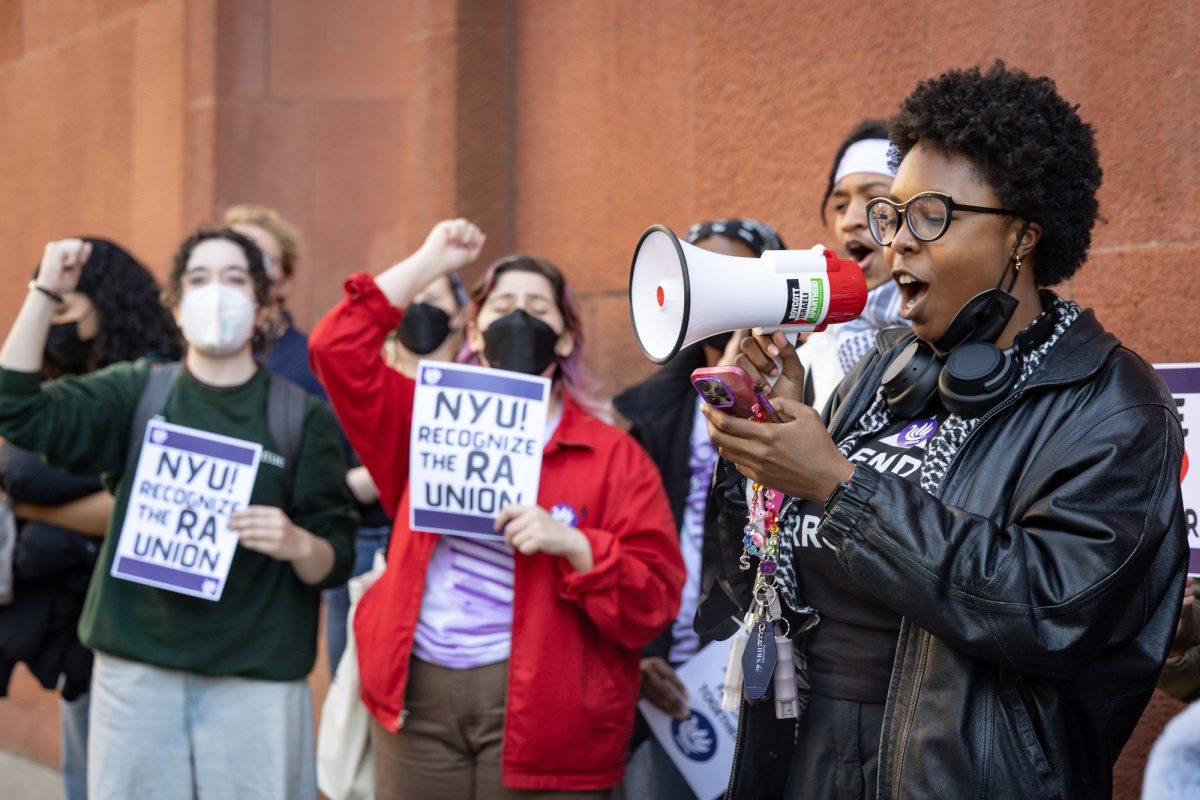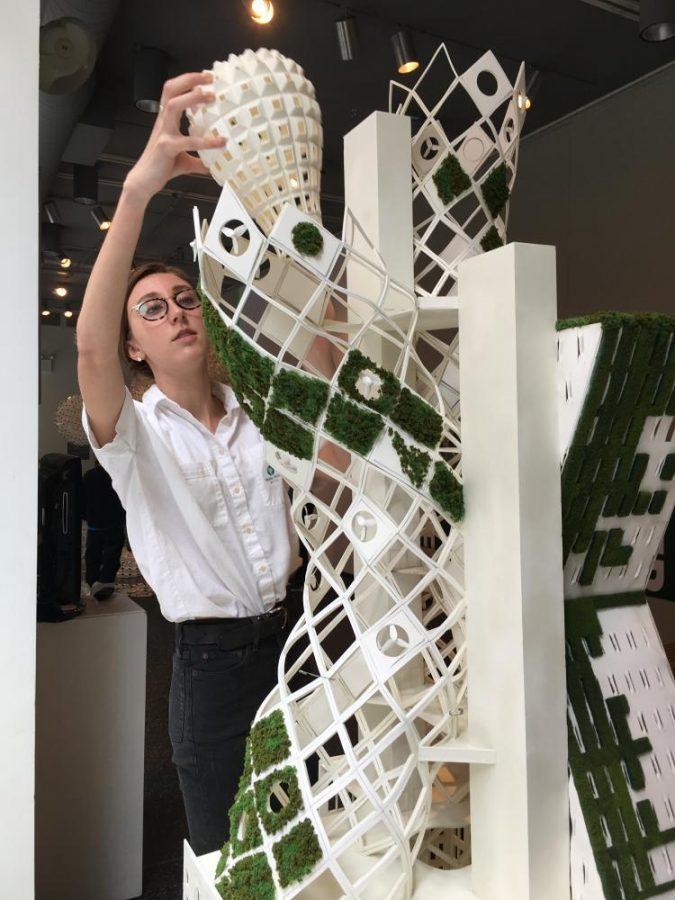Gallatin Students Create ‘School of the Earth’ 2061 Plan
A student from the class puts the finishing touches on the 3D model of Gallatin’s 2061 “School of the Earth” plan.
October 12, 2017
Gallatin students predict that the future will be bright. Last semester, a Gallatin School of Individualized Study class called Climate Adaptation, led by Associate Professors Peder Anker and Mitch Joachim, took on the task of drafting a plan for a School of the Earth — a building that will have positive effects on the environment and be an inclusive and progressive space in the NYU community and neighborhood.
Once the class brainstormed and compiled its research, students split themselves up into groups to put their vision into action. They designed and 3D printed a model of the building, wrote a book with a mission statement and a manifesto of the school’s progressive curriculum, produced a short film on the project, put together a gallery space and organized an event to share their work.
“We talked about different ways that people have adapted to the climate before, and the different ways that architecture and design is doing it now,” Anker said. “That’s half of the course. And the second half of the course is we give out a vision for creating the school for tomorrow.”
Gallatin Dean Susanne Wofford provided the class with a grant for getting technical training in different design tools and planning the event.
Anker and Joachim chose to aim the project at 2061 because that will be the year that Albert Gallatin, the namesake of the school, would have turned 300 years old. According to scientific predictions, the effects of climate change will be too profound to ignore, but not so devastating as to prevent communities from taking positive actions.
Anker said that this project was also in part a response to the university’s 2031 expansion plan.
“We challenged the students to think hard about what climate change would do to our community and what we could do for our community as a school,” Anker said. “It is quite moving because [the students] had the chance to think critically about the way we get energy, the way we eat, what type of food we should grow, the curriculum we’re going to teach and the type of faculty we need to hire.”
Gallatin senior Josh Shapiro worked on several different aspects of the project including the 3D model, the book and the event planning.
“I don’t think the purpose of making this plan was necessarily to put it into effect and accomplish it by 2061,” Shapiro said. “I think this was more about designing an ideal building with no restrictions, predicated on the knowledge that our climate is changing.”
The manifesto written by students described incorporating a permanent installation on indigenous claims to the land and native environmental methods, photo exhibits, documentary screenings and guest speakers dedicated to issues surrounding the environment, because of the belief that everything is connected and therefore the changing environment is interconnected with social injustices.
“We were just shepherds in helping the students form their own vision, and had their own fun doing it,” Anker said. “Students in our class came up with a vision for the school that will make the school be more adaptive to climate adaptation.”
Joachim said that the building plans are feasible within a contemporary budget and in 2061 it will be less costly to undertake.
“We asked [the students] to question all authority, including ourselves,” Joachim said. “We equalized the field to respect all generations and perspectives.”
Shapiro said that one of the biggest challenges the group faced was the fact that the students had varying skill levels when it came to making the film, the model and the book — but this variation ultimately became one of the strengths of the group.
“I’m hesitant to say that there was more structure needed from the professors,” Shapiro said. “Critics would say that classes like this shouldn’t exist, but the truth is that I’d rather have a class that was slightly lacking in structure than a class that left no room for imagination and growth.”
There indeed was plenty of room for experimental thinking — the class stretched its imagination and embraced the use of pods for classrooms, community lounges and food centers.
“Pods are dope,” Shapiro said. “The possibilities are endless.”
Anker said that while Gallatin already has a platinum certification for its environmental impact, there are aspects of the School of the Earth that are being considered for the future.
“We created a vision, and now it’s up to the school to use that vision,” Anker said. “The idea of the makerspace, having more greenery within the building and using the roof in a different way is something the dean of the school is thinking about.”
Email Miranda Levingston at [email protected].










































































































































